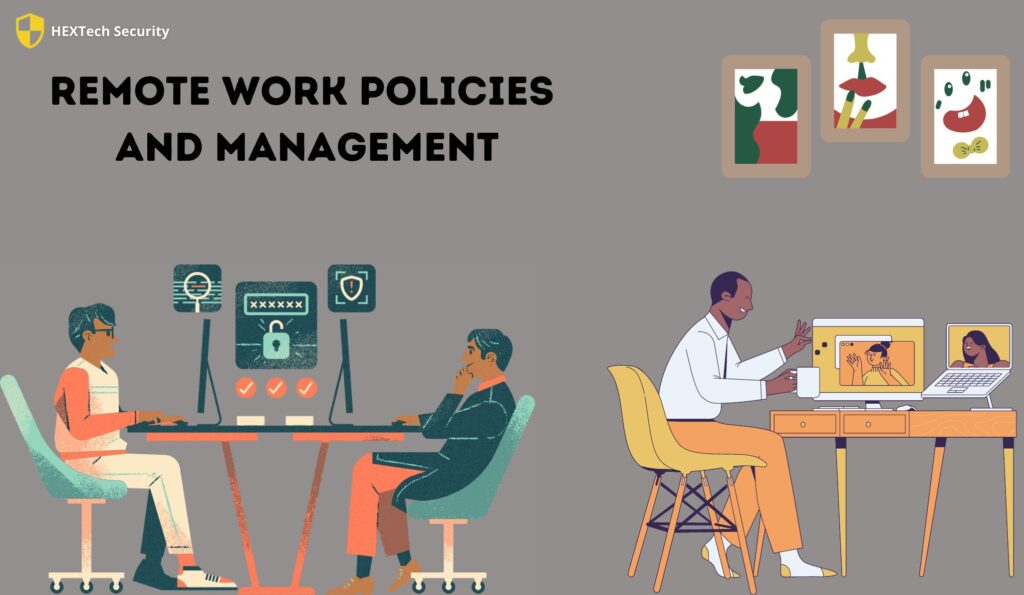The landscape of work has undergone a transformative shift in the past few years, especially with the advent and subsequent normalization of remote work. What was once considered a luxury or a temporary solution has now emerged as a mainstream working model, embraced by businesses across the globe. This transition hasn’t just changed where we work, but also how we work, bringing new challenges and opportunities in its wake.
The Growing Trend of Remote Work
Remote work, once a niche concept, has now become a fundamental part of the global work culture. The flexibility and potential for a better work-life balance have made it a popular choice among employees, while employers appreciate the reduction in overhead costs and access to a broader talent pool. This shift has been accelerated by advancements in technology, making collaboration and communication over long distances easier than ever.
Why Adopting Best Practices Matters
In this constantly evolving work environment, adopting best practices for remote work is not just beneficial; it’s essential. Best practices act as a roadmap to efficiency and security in a landscape that’s still relatively new to many. They provide guidance on maintaining productivity, ensuring robust cybersecurity, and fostering a healthy work culture, even when teams are dispersed geographically.
Foundations of Remote Work

Embracing remote work is more than just shifting from an office to a home environment; it involves a comprehensive understanding of how to maintain productivity, foster collaboration, and ensure well-being in a non-traditional work setting. Best practices in remote work are the cornerstone of this transition, offering guidelines and strategies that have been refined over time to ensure remote work is not just feasible, but also efficient and rewarding.
Evolution of Remote Work: 2020 to 2024
The journey of remote work from 2020 to 2024 is a narrative of rapid evolution and adaptation. Triggered initially by global health concerns, remote work swiftly transitioned from a temporary fix to a permanent change in many organizations. Over these years, technologies for virtual collaboration saw significant advancements, and businesses developed new protocols to support remote work. This period witnessed a cultural shift in the corporate world, where flexibility and work-life balance became key elements of employee satisfaction and company policies.
Adapting to Workplace Flexibility and Remote Challenges
Adapting to the flexibility offered by remote work, while navigating its challenges, is crucial. This adaptation involves setting clear boundaries between work and personal life, developing new communication norms, and leveraging technology to stay connected. The ability to work from anywhere also brought unique challenges, such as managing different time zones, ensuring consistent productivity, and maintaining team cohesion. Addressing these challenges required innovative solutions and a rethinking of traditional work models.
Security in Remote Work
In the domain of remote work, security is a paramount concern. The shift from a controlled office environment to diverse, often home-based setups, introduces new vulnerabilities. Best practices in remote work security are not just recommendations; they are essential protocols to protect sensitive information and maintain business integrity. This involves a multi-layered approach encompassing technology, policy, and employee education.
Implementing Cybersecurity Measures
Effective cybersecurity measures are the first line of defense in a remote work setup. This includes using VPNs (Virtual Private Networks) to secure internet connections, employing end-to-end encryption for data transmission, and ensuring all devices used for work are equipped with updated antivirus software. Regular security audits and the use of intrusion detection systems are also crucial to identify and rectify any vulnerabilities promptly.
Ensuring Data Protection and Privacy
Protecting data in a remote work environment goes beyond technology. It involves setting stringent data access policies, regularly updating passwords, and training employees on data privacy best practices. Companies should enforce policies like not storing sensitive information on personal devices and using secure cloud services for data storage and sharing. Regular training sessions on data privacy, phishing scams, and other security threats are essential to keep the entire team informed and vigilant.
Communication and Collaboration in Remote Work
Effective communication is the backbone of successful remote work. As teams are dispersed across various locations, maintaining clear and consistent communication becomes crucial. Best practices in remote communication not only involve choosing the right tools but also developing a communication culture that supports understanding and collaboration.
Tools and Strategies for Effective Team Interaction
Selecting the right communication tools is vital for remote work. This includes a combination of messaging apps, video conferencing tools, and project management software. However, effective communication isn’t just about tools; it’s also about how they are used. Setting clear guidelines on communication protocols, like when to send an email versus when to call, plays a significant role in enhancing team interactions. Additionally, regular virtual team meetings and one-on-one check-ins can help maintain a sense of connection and team cohesion.
Overcoming Communication Barriers in Remote Teams
Remote work can sometimes lead to feelings of isolation and miscommunication. To overcome these challenges, it’s important to establish a culture of open and transparent communication. Encouraging team members to share their thoughts and concerns, and ensuring that everyone has an equal opportunity to contribute, can help mitigate these barriers. Regular team-building activities and informal virtual gatherings can also foster a sense of community and belonging, which is essential in a remote setting.
Remote Work Policies and Management

Creating robust and clear remote work policies is essential for any organization embracing remote work. These policies provide a framework that helps ensure consistency, fairness, and clarity in remote work practices. They cover various aspects, including work hours, communication expectations, and data security protocols, guiding both employees and management in navigating the remote work environment effectively.
Crafting Comprehensive Remote Work Guidelines
Developing comprehensive remote work guidelines involves more than just dictating work hours and meeting schedules. It requires a thoughtful approach that considers the diverse needs and circumstances of remote employees. These guidelines should cover aspects like ergonomic best practices for setting up home offices, expectations for availability and responsiveness, and guidelines for maintaining a healthy work-life balance. They should also outline procedures for reporting technical issues and accessing support.
Legal and Ethical Considerations in Remote Policies
When drafting remote work policies, legal and ethical considerations must be taken into account. This includes complying with labor laws, ensuring equality and non-discrimination in remote work arrangements, and respecting employees’ privacy and data rights. Regular reviews and updates of these policies are necessary to keep them in line with evolving legal standards and best practices.
Best Practices for Remote Work Management
Successfully managing a remote team requires a different set of skills and strategies compared to traditional in-office management. It’s about fostering trust, encouraging autonomy while maintaining accountability, and supporting team members in overcoming the unique challenges of remote work.
Leading Remote Teams Successfully
Effective leadership in a remote setting involves clear communication, empathy, and flexibility. Leaders need to establish clear goals and expectations, provide regular feedback, and remain accessible to their team members. Encouraging open communication and fostering a culture where feedback is welcomed and acted upon is crucial. Regular team meetings and one-on-one check-ins can help in monitoring progress and addressing any issues promptly.
Monitoring and Evaluating Remote Work Performance
Monitoring and evaluating the performance of remote workers should focus on outcomes and productivity rather than just activity. Setting clear, measurable goals and key performance indicators (KPIs) helps in objectively assessing performance. Tools and software can aid in tracking project progress and individual contributions, but they should be used judiciously to avoid micromanagement. Regular performance reviews and constructive feedback are vital for continuous improvement and personal development.
Conclusion
The evolution of remote work since 2020 has been remarkable, transforming it from a necessity to a key component of modern business strategy. The adoption of best practices in remote work is vital for maximizing efficiency, security, and employee satisfaction. As we continue into 2024 and beyond, the success of remote work will hinge on our ability to adapt to new trends and technologies.
Remote work has opened doors to greater flexibility and a better work-life balance. By embracing these best practices, both businesses and employees can harness the full potential of remote work, ensuring a more dynamic and inclusive work environment.








